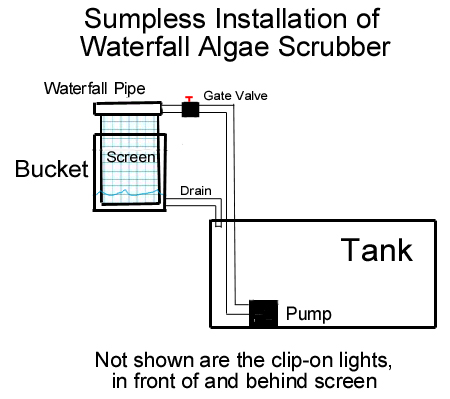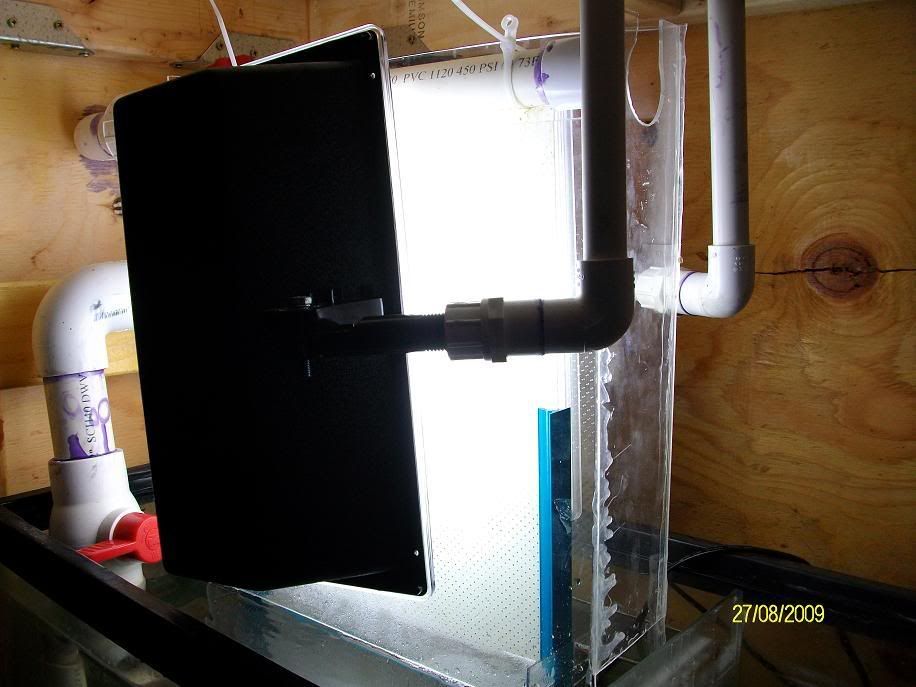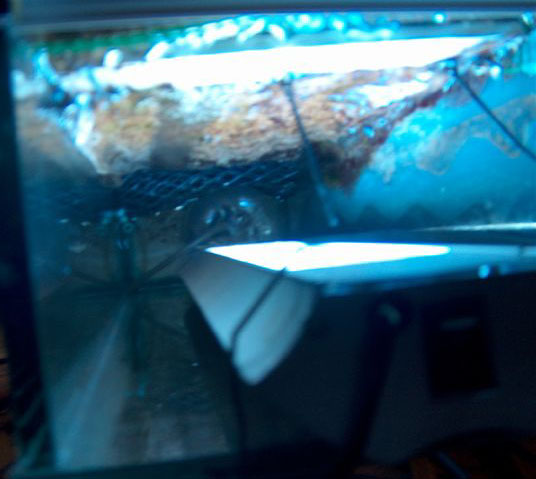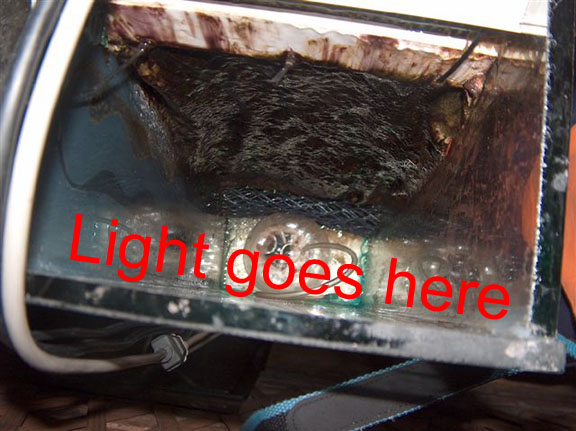Update: Deep-Sump Nano's
There are two types of nano's: The one that has a hatch on the top, so you don't have to open the whole lid to get to the filters, and the one without a hatch, where you do have to open the lid. It's this second one (with a deep "sump"), that is the most difficult to put a scrubber into. Indeed, if at all possible, you want to instead make an external scrubber, that sits above the tank:

You can enclose the scrubber with a box, or just use the lid of the bucket, to keep the light in. And actually, since nano's need such small screens, you could just use a coffee can, with the lid, which will block out all light once sealed. Decorate the can like a vase, and it will add to your decor. And use black tubing too so it looks nice. It doesn't need air flow, unless you want evaporation and cooling. Regardless, if you do this design, make sure to use "aquarium-safe" silicon on all electrical connection inside the bucket (including where the bulb screws in), because water and salt will build and short it out.
If, however, there is no possible way to put a scrubber above your nano, then you can install one in the "sump" area if you are good at DIY. It's a tight fit, but it can be done:
Riaanp on the MASA site did this:
And Nitschke65 on the SWF site did this:
The idea is to use one of the compartments (probably the middle one) for a waterfall area. For lighting, although Riaanp put the light inside, it's probably best to put the light on the outside (back) of the tank, and scrub off the paint on the backside so that the light can get through to the scrubber screen. The bulb only needs to be one watt for every gallon, so a 13 or 18 watts CFL 3000K is fine.
Fortunately you don't need much screen size for a nano... just 2 square inches (6.25 square cm) for every U.S. gallon (3.8 liters), because the screen is one-sided.
This type of setup is nice because it does not require any cutting of the sump walls, and thus can be converted back easily. Also, there is no real cost... just the screen (2 layers of roughed-up plastic canvas, about $1 USD), and the bulb and socket, probably $7.












